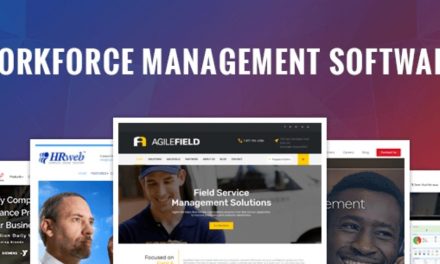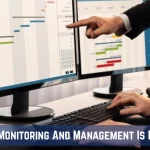Ever wondered how to make work better? That’s where the Employee productivity report steps in. It’s like a secret map to help businesses understand how well their teams are doing.
Whether you’re a boss or someone in charge of a team, this is where you learn the tips to boost how everyone works.
We’re diving into what these reports are, why they matter, and how to use them. Think of it as a treasure hunt for ways to make work smoother and get more done.
Join in as we unravel the mystery behind the employee productivity report. We’re skipping the complicated stuff and focusing on what helps businesses grow.
LISTEN TO THE PODCAST NOW!
Understanding What An Employee Productivity Report Is
An employee productivity report is like a scoreboard for how well a team or employees are doing their work. It’s a summary that shows how much work is getting done, how efficient everyone is, and where there might be room for improvement.
This report typically includes things like- the number of tasks completed, how long it takes to finish them, and how good the quality of work is. It helps bosses and managers see who’s doing great, who might need some help, and how the team can work better together.
Imagine it like a report card for a team’s work. Just like you get grades in different subjects at school, this report shows how well different parts of work are going—kind of like getting grades for how fast tasks are finished or how well they’re done. It’s all about helping teams figure out what they’re doing well and where they can do even better.
Key Benefits Of Productivity Reporting
Here are the key benefits of employee productivity reporting:
Performance Evaluation:
Employee productivity report provide a clear snapshot of individual and team performance. It helps in identifying high-performing employees, understanding their methods, and recognizing areas where improvement might be needed.
Resource Optimization:
By understanding how time, money, and effort are being utilized, businesses can allocate resources more effectively. This optimization ensures that resources are directed- towards tasks or projects that contribute most to the organization’s goals.
Decision-Making Support:
These reports offer valuable data that supports informed decision-making. Whether it’s about staffing, project prioritization, or process improvements, having concrete productivity data aids in making strategic choices.
Goal Setting And Progress Tracking:
Employee productivity report act as benchmarks for setting realistic goals. They enable teams to track progress against these goals, providing motivation and direction for continuous improvement. Utilizing employee productivity tracking software like EmpMonitor, these reports become even more effective, offering a streamlined way to monitor and manage employee productivity.
Identifying Bottlenecks And Inefficiencies:
Reports highlight bottlenecks and inefficiencies in workflows or processes. Identifying these areas allows for targeted improvements and streamlining operations for better productivity.
Enhancing Accountability And Transparency:
These reports foster a culture of accountability and transparency within an organization. When everyone has visibility into productivity metrics, it encourages responsibility and collaboration, leading to improved overall performance.
By leveraging these benefits, employee productivity reporting becomes a powerful tool for organizational growth, fostering a more efficient, informed, and productive work environment.
It enhances the insights derived from productivity report for employees, allowing for a deeper understanding of performance metrics and facilitating more informed decision-making.
Essential Information To Include In Your Employee Productivity Report
In every productivity report, certain essential categories ensure a thorough assessment of employee performance and task allocation. While the specifics may vary based on industry or business goals, here’s what you should include:
Employee Identification:
Starting with clear identification, include the employee’s name and any relevant additional details like job title. This ensures easy tracking, especially with multiple employees, simplifying data search and optimization of time.
Tasks Completed:
Listing the day’s tasks aids in evaluating employee performance and planning for productivity enhancements. It offers insights into daily productivity report, impacting organizational structure and planning phases.
Hours Worked:
Tracking the number of hours dedicated to tasks is crucial for evaluating productivity and engagement. Accurate documentation assists in payroll calculations and overtime management, reducing errors.
Effort Allocation:
Beyond hours, categorizing tasks based on effort helps align time spent with task requirements. Distinguishing between deep tasks (e.g., complex projects) and shallow tasks (e.g., routine assignments) aids in evaluating task completion time versus expectations.
Activity Monitoring:
Monitoring employee actions during work hours becomes essential, particularly for remote workers. Utilizing employee productivity measurement tools like EmpMonitor becomes crucial in ensuring task alignment and productivity.
Such tools encompass applications that track computer usage or task timers, offering insights into how time is utilized and how tasks are managed- throughout the workday with a user activity report.
Task Results:
Tailoring result measurement to specific business metrics (e.g., sales leads generated and converted) enables precise evaluation of task performance, directly impacting productivity assessment.
Additional Notes:
Leaving space for employee comments on their workday or report period encourages feedback. These insights are invaluable for addressing workspace issues or implementing strategies to enhance productivity.
Incorporating the above shown strategies in your employee productivity reporting, alongside the utilization of Workforce productivity software, enhances evaluation accuracy and provides a comprehensive understanding of employee performance, fostering strategies for improved productivity.
The use of such software would help you to check on the productive work hours and engagement of employees. So, you can accordingly manage work schedules more appropriately.
EmpMonitor: Workforce Productivity Engagement Software
EmpMonitor is a powerful workforce productivity engagement software designed to provide comprehensive insights into employee performance and engagement levels within an organization.
With its user-friendly interface and robust functionalities, EmpMonitor stands as a valuable asset for companies seeking to optimize productivity, streamline workflows, and enhance overall performance.
EmpMonitor offers a range of features:
Time Tracking:
EmpMonitor accurately records employee work hours, breaks, and idle time. It offers detailed insights into how time is utilized throughout the workday, aiding in evaluating productivity based on actual working hours.
Application and Website Monitoring:
EmpMonitor tracks application and website usage, offering a detailed analysis of where time is spent- during working hours. It helps identify productivity-draining activities and encourages focused work habits.
Productivity Analysis and Reports:
The software generates comprehensive reports detailing employee productivity metrics, such as active hours, time spent on specific tasks, and overall productivity trends. These reports offer valuable insights for performance evaluation and strategic planning.
Real-time Monitoring and Alerts:
EmpMonitor provides real-time monitoring capabilities, allowing supervisors to track employee activities as they happen. Additionally, it offers alerts for specific activities or time thresholds, ensuring timely intervention for improved productivity.
EmpMonitor’s robust features empower organizations to effectively track, optimize, and analyze employee productivity report, contributing to enhanced efficiency and informed decision-making.
5 Simple Productivity Reporting Methods
Accurate productivity reporting relies on effective and precise performance tracking methodologies. Here are five leading methods commonly used for productivity reporting:
Productivity Output Method:
This traditional method to measure productivity :
Productivity = Units of Output / Units of Input
When an employee’s output score is higher than their input, we consider them as ‘productive.’ The greater the variance between the input and output, the higher the productivity.
However, this approach may not suit modern roles with varied functions.
Reporting Completed Tasks:
Focused on task completion rather than time spent, this method involves breaking down projects, assigning tasks, and tracking completed assignments. The emphasis is on achieving task-specific Key Performance Indicators (KPIs).
Productivity Calculated By Profits:
This method evaluates productivity based on the profit generated compared to labor costs. It’s beneficial in businesses where revenue directly correlates with employee efforts, like in service-based industries.
Co-worker Assessment Method:
Involves peer assessment where team members- evaluate each other’s productivity based on defined criteria. However, its accuracy might be compromised- due to personal biases or lack of comprehensive understanding.
Time Tracking & Performance Management Software:
Utilizing EmpMonitor software for time tracking and performance management offers accurate productivity tracking. It allows electronic monitoring of working hours, enabling real-time insights and precise data for productivity reports.
Each method has its strengths and limitations. While traditional productivity metrics might not suit modern, dynamic roles, the task-based approach emphasizes accomplishment. Profit-driven evaluations suit revenue-centric businesses, and peer assessments may foster team accountability.
However, utilizing advanced software, like EmpMonitor, provides the most accurate and comprehensive productivity insights by enabling real-time tracking and precise data recording. This software ensures a better understanding of performance metrics and facilitates more informed decision-making processes.
ALSO READ
How To Analyze Employee Productivity Report: Things To Consider
Top 3 Employee Productivity Measurement Tools On The Market
Boost Employee Productivity With Effective Software Solution
Tips To Create A Better Employee Productivity Report
Here are key points for creating an effective employee productivity report:
Define Clear Objectives:
Start by defining the purpose of the report. Understand what aspects of productivity you aim to measure—whether it’s task completion rates, time allocation, or project milestones.
Focused Metrics Selection:
Choose relevant metrics aligned with your objectives, like completed tasks, project timelines, or efficiency ratios. Focus on quality rather than overwhelming the report with excessive data.
Provide Contextual Insights:
Contextualize the data within the report. Explain trends, patterns, or anomalies observed in the productivity metrics. Offer insights into what the numbers mean for the team or the organization.
Comparative Analysis:
Compare current productivity data with previous periods or benchmarks. Comparative analysis provides context and helps in assessing improvements or areas needing attention.
Actionable Recommendations:
Highlight actionable insights derived from the data. Offer strategies or recommendations for improvement based on the analysis, fostering proactive decision-making.
Customize Reports For Audience:
Tailor reports to suit the audience. Senior management may require concise, high-level summaries, while team leaders might benefit from more granular details.
By implementing these tips, you can create more insightful, actionable, and impactful employee productivity report, aiding in better decision-making and fostering continuous improvement within the organization.
Wrapping Up
Employee productivity reports are like a compass guiding businesses toward success. By summarizing how well teams work and where improvements can happen, these reports are powerful tools. Remember, it’s not just about numbers; it’s about making work better for everyone.
As you dive into productivity reporting, keep it simple and clear. Choose employee productivity software like EmpMonitor and metrics that matter and make sense for your team. Visuals like graphs or charts can be your best friends—they make understanding the data a whole lot easier.
Your report should be a roadmap for improvement. Offer strategies and recommendations based on what you’ve found. It’s all about moving forward.
Remember that these reports are meant to help, not just measure. Use them to spark conversations, build better workflows, and make work a little bit smoother for everyone involved. Because in the end, it’s not just about the report—it’s about creating a workplace where everyone thrives.












